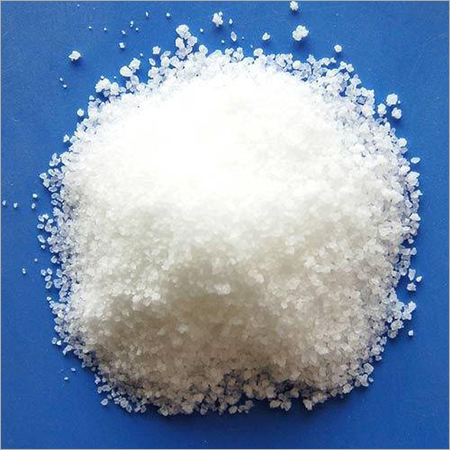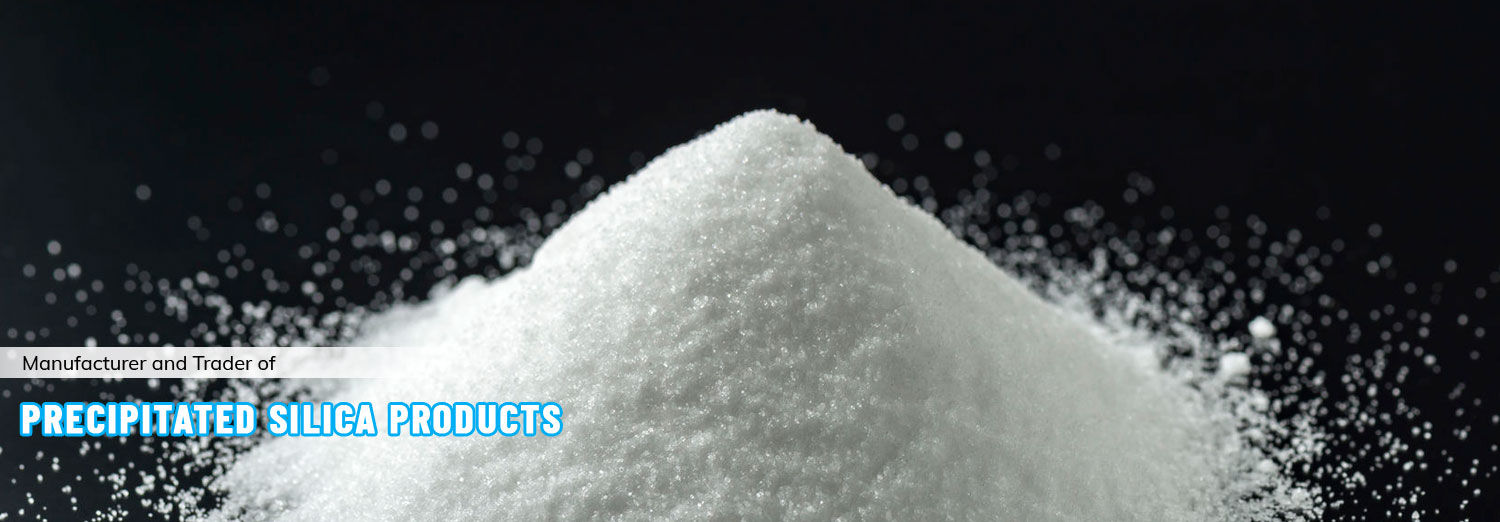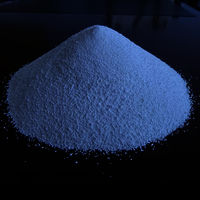

Sodium Metasilicate
50.00 - 90.00 आईएनआर/Kilograms
उत्पाद विवरण:
- विषैला
- पीएच लेवल 12.4 (1% solution)
- शेल्फ लाइफ 24 Months
- शेप स्फटिक
- अपवर्तक दर 1.52 (approx.)
- दिखावट White powder / crystalline solid
- गंध
- Click to view more
X
सोडियम मेटासिलिकेट मूल्य और मात्रा
- 500
- किलोग्राम/किलोग्राम
- किलोग्राम/किलोग्राम
सोडियम मेटासिलिकेट उत्पाद की विशेषताएं
- Inorganic Salt
- 229-912-9
- 1088 °C
- Industrial Grade
- 12.4 (1% solution)
- कमरे का तापमान
- 99%
- 24 Months
- Sodium oxide, Silicon dioxide
- 28391100
- सॉलिड
- 122.06 g/mol
- Highly alkaline, hygroscopic, effective cleaning agent
- 6834-92-0
- पानी में घुलनशील
- 1.52 (approx.)
- ग्राम प्रति घन सेंटीमीटर (g/cm3)
- White powder / crystalline solid
- स्फटिक
- Used as a cleaning agent, water softener, and in industrial processes
सोडियम मेटासिलिकेट व्यापार सूचना
- 5000 प्रति दिन
- 3 दिन
- Yes
- हमारी नमूना नीति के बारे में जानकारी के लिए हमसे संपर्क करें
- एशिया, ऑस्ट्रेलिया, मध्य अमेरिका, उत्तरी अमेरिका, दक्षिण अमेरिका, पूर्वी यूरोप, मिडल ईस्ट, अफ्रीका, पश्चिमी यूरोप
- ऑल इंडिया
उत्पाद विवरण
White powder based Sodium Metasilicate has wide application in metal surface treatment, ceramic production, refractory material manufacturing and also in various other industries. Whiteness of this chemical is more than or equal to 75. Its maximum relative density is 1.0 g/cm3. Melting point of Sodium Metasilicate is 72 degree centigrade. Offered chemical can enhance liquidity level of slurry based substances to decrease their viscosity. Standard of this chemical has been tested on the basis of its shelf life, composition, possible toxin content and chemical stability.
Sodium Metasilicate Properties:
1. Chemical Formula: Na2SiO3
2. Molecular Weight: The molecular weight of sodium metasilicate is approximately 122.06 g/mol.
3. Physical Appearance: It is commonly found as a white, granular or crystalline powder.
4. Solubility: Sodium metasilicate is soluble in water, and its solubility increases with higher temperatures.
5. pH: In solution, sodium metasilicate is alkaline and can raise the pH. It is often used as a builder or alkaline component in various cleaning products.
6. Hygroscopic: It has hygroscopic properties, meaning it can absorb and retain moisture from the air.
7. Melting Point: Sodium metasilicate typically doesnt have a distinct melting point since it tends to undergo dehydration when heated.
Applications of Sodium Metasilicate:
1. Detergents and Cleaning Products:
- Sodium metasilicate is used as a builder in laundry detergents, automatic dishwashing detergents, and industrial cleaning products.
- It helps to enhance the cleaning efficiency by preventing the re-deposition of dirt and improving the stability of the detergent formulation.
2. Metal Cleaning and Degreasing:
- It is employed in metal-cleaning formulations to remove scale, rust, and stains from metal surfaces.
- Sodium metasilicate is effective in degreasing applications, making it valuable in industrial cleaning processes.
3. Concrete and Cement Products:
- In the construction industry, sodium metasilicate is utilized as a concrete densifier to improve the hardness and durability of concrete surfaces.
- It reacts with the calcium hydroxide present in concrete to form a durable and insoluble silica gel, enhancing the properties of the concrete.
4. Adhesives:
- Sodium metasilicate can be used in certain adhesive formulations where its alkaline nature and reactivity contribute to the adhesives properties.
5. Fireproofing:
- In some fireproofing mixtures, sodium metasilicate may be included to enhance the fire resistance of materials.
6. Textile Industry:
- Sodium metasilicate is employed in the textile industry for desizing, scouring, and bleaching processes.
7. Photography:
- It has been used in the development of photographic films and papers.
8. Water Treatment:
- In water treatment processes, sodium metasilicate may be used for controlling the corrosion of pipes and as a coagulant in wastewater treatment.
9. Ceramics and Glass Industry:
- It is used in the ceramics and glass industry as a flux to lower the melting point of raw materials during the manufacturing process.
10. Electroplating:
- Sodium metasilicate can be employed in electroplating processes to clean and prepare metal surfaces for plating.
Sodium Metasilicate FAQ:
Q. What is sodium metasilicate?
Ans: Sodium metasilicate is a chemical compound with the formula Na2SiO3. It is a white, granular or crystalline powder that is soluble in water.
Q. What are the common uses of sodium metasilicate?
Ans: Sodium metasilicate is commonly used as a builder in detergents, especially in laundry detergents and automatic dishwashing detergents. It is also used in cleaning products, metal cleaning and degreasing, concrete densification, adhesives, fireproofing, and various industrial applications.
Q. How does sodium metasilicate work in detergents?
Ans: In detergents, sodium metasilicate acts as a builder. It helps to soften water, improve the stability of the detergent formulation, and prevent the redeposition of dirt on cleaned surfaces.
Q. Is sodium metasilicate safe to use?
Ans: While sodium metasilicate is generally considered safe for its intended industrial and household uses, it can be irritating to the skin and eyes. Its important to follow safety guidelines, use protective equipment, and handle it with care.
Q. What precautions should be taken when working with sodium metasilicate?
Ans: Users should wear appropriate protective gear, including gloves and goggles, to prevent skin and eye contact. Adequate ventilation should be ensured, and contact with incompatible substances should be avoided.
Q. Can sodium metasilicate be used in water treatment?
Ans: Yes, sodium metasilicate is used in water treatment processes to control corrosion and as a coagulant in wastewater treatment.
Q. Is sodium metasilicate environmentally friendly?
Ans: Sodium metasilicate is generally considered environmentally friendly, but its impact depends on the specific application. It is biodegradable, and its use in detergents can contribute to reducing the environmental impact of cleaning products.
Q. Can sodium metasilicate be used in the food industry?
Ans: Sodium metasilicate is not generally recognized as safe (GRAS) for direct food contact. It is primarily used in industrial applications, detergents, and cleaning products.
Q. Does sodium metasilicate have any other names?
Ans: Yes, sodium metasilicate may be referred to by other names, including water glass, sodium silicate, and sodium siliconate.
Q. What is the shelf life of sodium metasilicate?
Ans: Sodium metasilicate can have a long shelf life if stored properly in a cool, dry place away from incompatible substances. It should be kept in its original container and away from moisture.
Powerful Industrial Cleaner and Water Softener
Sodium Metasilicate stands out for its remarkable cleaning and water-softening capabilities in both household and industrial applications. Its high alkalinity effectively breaks down grease, oils, and mineral deposits, making it a preferred ingredient in detergents and soap formulations. The compounds solubility in water enhances its versatility, providing reliable results across diverse cleaning, textile, and water treatment processes.
Robust Stability and Easy Handling
Thanks to its thermal stability up to 40C in dry environments and shelf life of 24 months, Sodium Metasilicate is simple to store and transport. The product is hygroscopic, so it should be handled with gloves and eye protection to avoid irritation. Its packaging in sturdy 25 or 50 kg HDPE bags further ensures safety for exporters, manufacturers, and end users alike across global markets.
FAQs of Sodium Metasilicate:
Q: How is Sodium Metasilicate typically used in industrial processes?
A: Sodium Metasilicate is primarily used as a cleaning agent, water softener, and in various industrial applications such as detergents, ceramic production, water treatment, textile processing, and construction. Its high alkalinity facilitates the removal of stains, oils, and mineral deposits.Q: What are the safety precautions when handling Sodium Metasilicate?
A: While Sodium Metasilicate is not classified as hazardous or poisonous, it can irritate the eyes and skin. Therefore, proper protective equipment such as gloves and eye protection is recommended during handling to prevent contact and irritation.Q: When should Sodium Metasilicate be added during manufacturing processes?
A: It is best to introduce Sodium Metasilicate during the initial mixing or dissolving stage in manufacturing to ensure complete dissolution and maximum efficacy of its cleaning and softening properties. Follow specific process guidelines for optimal results based on the application.Q: Where should Sodium Metasilicate be stored for best stability?
A: For best results and extended shelf life, Sodium Metasilicate should be kept at room temperature in dry conditions. Proper storage in its original HDPE packaging helps prevent moisture absorption and maintains its quality up to 24 months.Q: What is the environmental impact of using Sodium Metasilicate?
A: Sodium Metasilicate is considered biodegradable under controlled conditions, making it a relatively eco-friendly option compared to many other industrial chemicals. It breaks down safely when managed according to environmental guidelines.Q: How does Sodium Metasilicate benefit water treatment processes?
A: In water treatment, Sodium Metasilicate acts as an effective water softener, helping to remove hardness caused by calcium and magnesium ions, thus enhancing process efficiency, reducing scaling, and improving equipment lifespan.Q: What forms and packaging sizes are available for Sodium Metasilicate?
A: This product is available in both pentahydrate and anhydrous forms, packed in 25 kg or 50 kg robust HDPE bags, making it suitable for various industrial and commercial usages in Asia, Africa, the Middle East, and Europe.Tell us about your requirement

Price: Â
Quantity
Select Unit
- 50
- 100
- 200
- 250
- 500
- 1000+
Additional detail
मोबाइल number
Email






